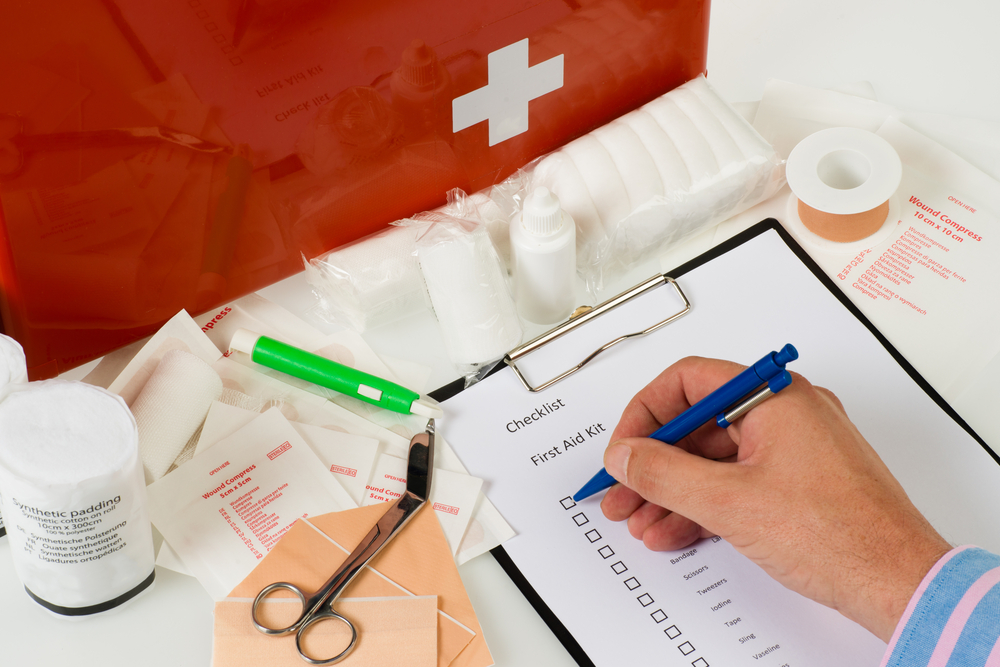PHA: Prepare Your Pulmonary Hypertension Emergency Kit

The Pulmonary Hypertension Association (PHA), the country’s leading non-profit organization for pulmonary hypertension (PH), maintains a daily blog on its website called PH Daily Beat, which provides those with PH helpful tips for living with the disease. Recently, the PHA put together a list of essentials for PH patients’ own PH Emergency Kit — a critical health tool that is important for when someone suffering from this serious cardiopulmonary condition experiences a severe complication, especially in the absence of a knowledgeable care provider.
The PHA recommends that a well-equipped PH Emergency Kit include the following items:
- A list of emergency phone numbers, including local emergency hotlines, the attending physician’s phone number, the pharmacy’s, and the direct phone number to the nearest ambulance company or department.
- Doctor’s note: Physicians will typically write a detailed note about a PH patient’s condition, along with instructions for your prescribed medications, to be included in an emergency kit so that EMTs and emergency room physicians can make more informed decisions. Have a copy in your emergency kit, as well as a pocket-sized version to carry around on your person, with your IDs.
- Medication list. Your complete list of prescribed medications, including “as needed” and “over the counter” drugs, is important for attending medical professionals and lay persons to know what you can safely take and how much of it to take. Also make it a point that you write down your oxygen dose and flow rate.
- Medications. You must stock a few of each of the items on your medication list, and make sure they are not expired, as some medications may not be on-hand at your local hospital and can only be procured from a specialty pharmacy.
- Medical supplies. You will need to stock on the necessary supplies to properly administer your medications, such as pumps, syringes, inhalers, batteries, needles, extension tubing, valves, alcohol pads and any necessary cleaning supplies specific to your condition.
- Thermometer. In the event of a fever.
- Blood pressure monitor. If you experience a flare of symptoms, and you contact your doctor, he will most likely ask for your blood pressure. You can use a digital, self-inflating device.
- Cell phone. Always inform someone if you are going somewhere alone. It’s also a good idea to sign up for a roadside assistance program — which is often offered by mobile phone carriers or auto clubs like AAA. If you do so, don’t forget to include those emergency numbers in your phone’s contact list.
- Medical alert identifier. Medical alert bracelets or necklaces are not necessarily part of a “kit,” but they effectively provide EMTs with key details about your condition(s).
- Overnight bag. Put together a small bag with some loose-fitting clothing, pajamas, slippers and some basic toiletries for a trip to the hospital and the trip home.
[adrotate group=”4″]
Other Considerations for PH Patients Who Are Prescribed Infused Medication:
- Back-up pump. Make sure you have your back-up pump in your emergency kit.
- Catheter site supplies. You must be equipped to effectively clean your catheter insertion site, and change your dressing as having a catheter has its own increased risk for infection. Stock on gloves, mask, alcohol pads, dressings, tape, etc.
- Site pain supplies. If prescribed subcutaneous Remodulin, a kit should also include the local and topical creams as well as systemic medicines needed to manage discomfort at the site of insertion.
- Portable cooler and ice packs. If any of your medications require refrigeration, have a portable cooler box or bag and pre-chilled ice packs.
[adrotate group=”3″]
Extra Items For Those Who Use Oxygen:
- Oxygen prescription specs. Information about your oxygen prescription or dosage should be included in the emergency kit.
- Back-up oxygen tanks. Many oxygen concentrators are not equipped with backup battery, and large liquid oxygen tanks are not portable. Have a mobile oxygen tank ready in the event of a power outage, or natural disaster, or if you need to rush to the hospital.
- Oxygen regulator.
- Oxygen tank tool. Do not use pliers to turn on your oxygen, as a spark caused by metal on metal is dangerous around an oxygen tank.
- Tank cart. This makes carrying your portable oxygen tank easier.
- Nasal cannula. Make sure your cannula is compatible with your oxygen source.
- Connectors and tubing. Have connectors and tubing that are extra long, if possible, or just have extra ones on hand for easier maneuvering and connecting, anywhere.
- CPAP or BiPAP machine. If sleep apnea is a problem for you, have in your kit your CPAP or BiPAP machine and mask/tubing/humidifier.
To read the PHA’s full article on preparing a Pulmonary Hypertension Emergency Kit, click here.







